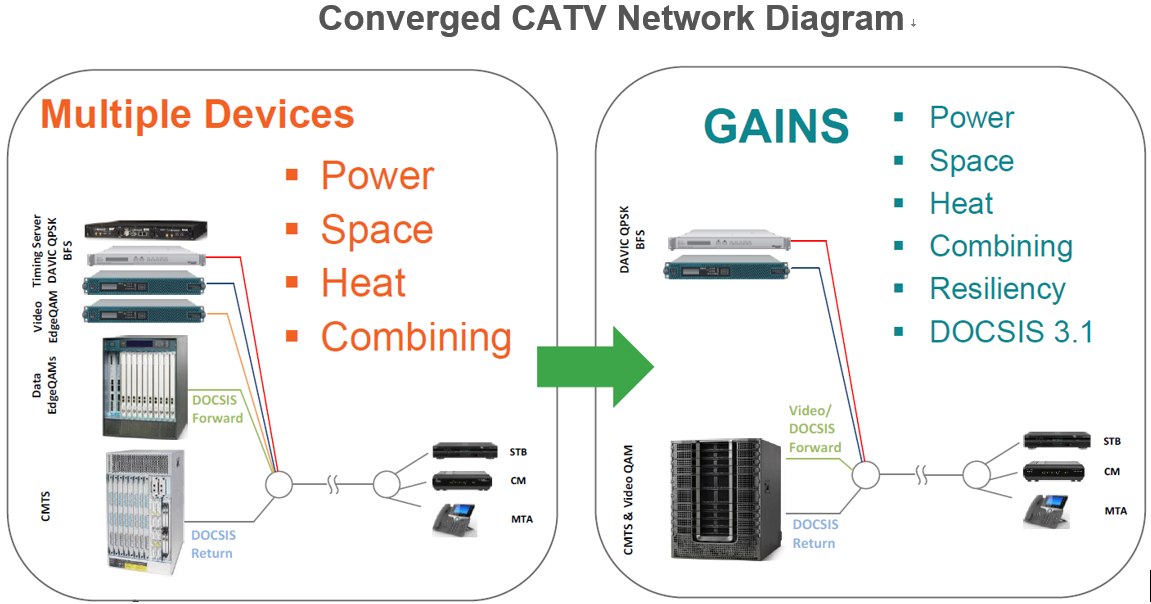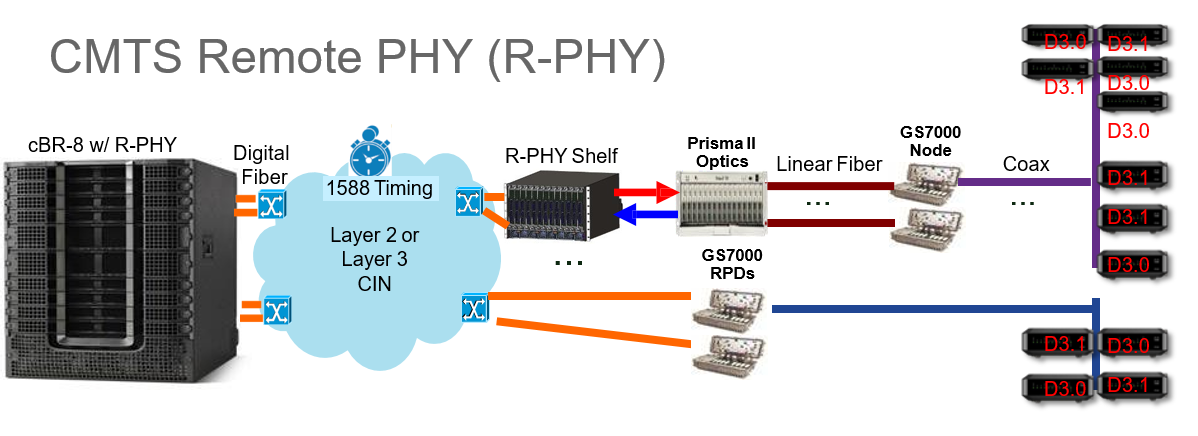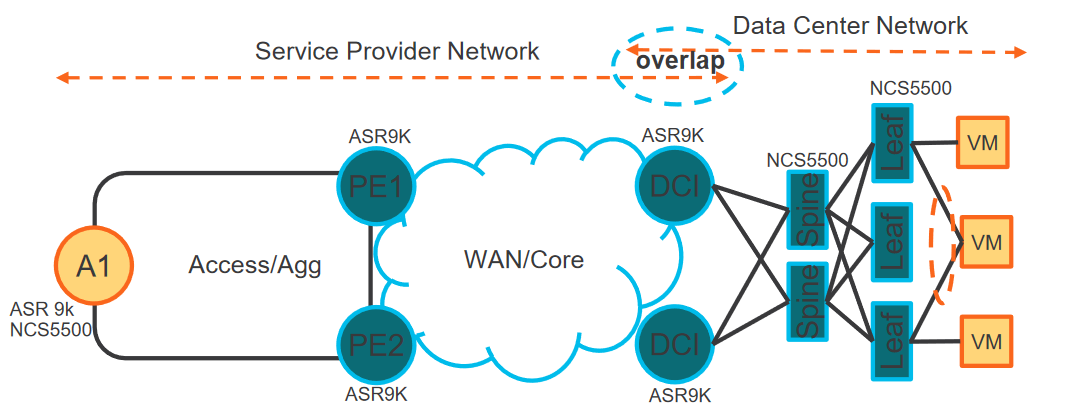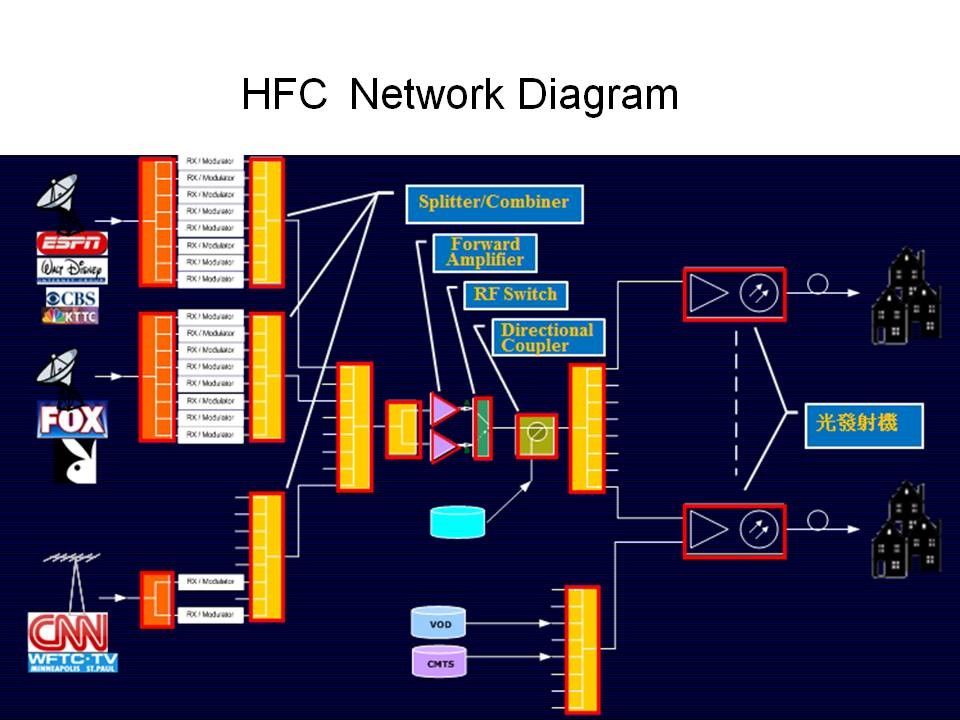Cable TV networks are composed of the following parts:
Cable TV digital head-end system
Broadband Internet access system
HFC network
Cable modem and other client devices

We resell related products for major items and provide effective solutions for customers to choose from. Moreover, we plan future new services and network infrastructure to fulfill customer's demands.Our solutions are described as follows:
CMTS
The Cable Modem Termination System (CMTS) is required equipment at central office site for cable TV companies who offers broadband Internet access connections. In recent years, the thriving development of the Internet, audio and video services, electronic commerce, and online games significantly increase the demands in Internet bandwidth. Also, competition has been directed to the last mile. It is an opportunity for the CMTS Internet access service based on the cable TV infrastructure. Because of the DOCSIS 3.0/3.1 standards and the technology of channel bonding, the CMTS could provide a superior price/performance ratio for the last mile bandwidth compared with ADSL as long as the cable network has sufficient bandwidth. In summary, the CMTS has the following advantages:
1. High transmission speed.
2. Dial-up is unnecessary. Your connection is always on.
3. One line can be shared by multiple users (TV signal is included).
4. The phone line is not occupied.
5. Real multimedia transmission capability.
The Cisco cBR8 CMTS system can satisfy the demand for large cable TV head-end. This model is equipped with the highest level of availability and features among existing CMTS products in the market today. The Cisco cBR8 CMTS system passes the inspection of CableLabs and complies with standards such as DOCSIS 1.0/2.0/3.0/3.1.

Cable Modem
The cable modem (CM) is a terminal unit that operates over cable TV two-way coaxial cables to provide Internet-related applications and services. The upstream frequency ranges from 5 to 50 MHz, and the downstream speed is commonly over 723 MHz. Either upstream or downstream could benefit from the channel bonding technology, which enables the use of multiple channels to increase the bandwidth. IDT sells cable modems manufactured by Hitron Technologies, which is the second largest manufacturer in Europe in terms of cable CPE terminal units. Its products are mature and stable as Hitron Technologies is now the number five manufacturer in global sales.
IP Network
The IP network allows enterprise employees to perform online real-time access from any location and any device, including PC, laptop, tablet, cellphone, or television. The IP network is located at the core of all communications and interactions. It is the basis of rapid and safe connections and driving the operation of business. The IP integrated network solutions and services provided by IDT ensure that your network is equipped with the operating efficiency suitable for your business.
IDT understands your need that the network has to be flexible and customized to satisfy communication demands, comply with legal regulations, business operation, and industry standards. We resell a variety of network switches and routers from Cisco. Through comprehensive services of planning, deployment, and maintenance, as well as in-depth network professional knowledge, we assist enterprises and service providers in building highly efficient and safe interactive connections with their coworkers, clients, vendors, business partners and information sources through the network we provide.
HFC Network
The entire transmission network of the cable TV system is more than the black coaxial cable we commonly see inside or outside our houses. In addition, the system consists of a hybrid fiber coaxial (HFC) network that combines high bandwidth fibers and two-way 750 MHz coaxial cables.Fibers begin from the cable TV head-end and are connected to the fiber nodes installed in the resident regions. The fiber nodes then transmit signals from the coaxial cables to the houses of users through cables.Therefore, the HFC network integrates the transmission networks of optical and coaxial lines. This network can be used to connect the physical networks between head-ends and end users, which include splitters, couplers, pre-amplifiers, fiber nodes, and taps.
